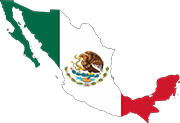International Versions
- Australia | New Zealand | Canada | Brazil | Mexico & Latin America
Australia
 TRY IT HERE!
TRY IT HERE!
It contains 53 nutrient values for foods and beverages consumed during the 2011‒12 National Nutrition and Physical Activity Survey (NNPAS)and the 2012‒13 National Aboriginal and Torres Strait Islander Nutrition and Physical Activity Survey (NATSINPAS) components of the 2011–13 Australian Health Survey (AHS).
It includes a combination of nutrients reported as part of the AHS and additional nutrients that were required by FSANZ to feed into nutrient calculations (note: these have been identified in the list below using an asterisk).
For foods and beverages, the 53 nutrients are:
- energy, with and without the contribution of dietary fibre to energy
- proximate constituents including moisture (water), protein, total fat, available carbohydrate (with and without sugar alcohols), total sugars, added sugars, free sugars, starch, dietary fibre, alcohol and ash*
- fatty acid components including total saturated, total monounsaturated, total polyunsaturated, total trans, total long chain omega 3, linoleic, alpha linolenic, eicosapentaenoic*, docosapentaenoic* and docosahexaenoic* fatty acids
- vitamins including vitamin A (as retinol equivalents), preformed vitamin A (retinol), pro vitamin A (beta-carotene equivalents) and beta-carotene*, thiamin, riboflavin, preformed niacin, niacin equivalents, vitamin B6, vitamin B12, vitamin C, alpha tocopherol*, vitamin E, natural folates, folic acid, total folates and dietary folate equivalents
- minerals including calcium, iodine, iron, magnesium, phosphorus, potassium, selenium, sodium and zinc
- other components including caffeine, cholesterol and tryptophan*.
Values for linoleic, alpha linolenic, eicosapentaenoic, docosapentaenoic and docosahexaenoic acids, total long chain omega 3 and total trans fatty acids, ash, beta-carotene, vitamin B6, vitamin B12, alpha-tocopherol, vitamin E, folic acid, dietary folate equivalents, iodine, selenium, sodium, tryptophan and caffeine were not previously published in AUSNUT 1999 (ANZFA, 1999).
Values for eicosapentaenoic, docosapentaenoic and docosahexaenoic acids and total trans fatty acids, ash, beta-carotene, vitamin B6, vitamin B12, alpha-tocopherol, folic acid, natural folates, selenium and tryptophan were not previously published in AUSNUT 2007 (FSANZ, 2008). AUSNUT 2007 did include values for vitamin D which are not included in AUSNUT 2011–13.
New Zealand
 TRY IT HERE!
TRY IT HERE!
The New Zealand Institute for Plant & Food Research Limited and the Ministry of Health jointly own the New Zealand Food Composition Database (NZFCD), the largest and most comprehensive collection of nutrient data in New Zealand. Staff at Plant & Food Research manage and maintain the NZFCD. The NZFCD's primary role is to provide up-to-date nutrient values for foods commonly consumed in New Zealand. It contains nutrient information including moisture, ash, carbohydrate, protein, fat, cholesterol, caffeine, vitamins, minerals, fatty acids and fibre. Accredited laboratories in New Zealand and Australia are used to analyse these nutrients in the foods.
New Zealand Food Composition Data for Nutrition Information Panel (NZFCD-NIP) assist food manufacturers in estimating NIPs for their products. It presents seven core nutrients for foods and ingredients. The energy values are reported as kilocalories (kcal) and as kilojoules (kJ). The values are calculated from the energy-producing food components (carbohydrate, available; protein; fat, total; and alcohol) with and without dietary fibre and other energy producing food components, using the appropriate energy conversion factors.
Canada
 TRY IT HERE!
TRY IT HERE!
The Canadian Nutrient File (CNF) is a computerized, bilingual food composition database containing average values for nutrients in foods available in Canada.
Much of the data in the CNF have been derived from the comprehensive United States Department of Agriculture (USDA) National Nutrient Database for Standard Reference, up to and including standard release 27.
Foods included in the USDA database that are known not to be on the Canadian market are excluded.
Modification for Canadian levels of fortification and regulatory standards, along with addition of Canadian only foods or Canadian commodity data, as well as where appropriate, some brand name foods, forms this standard Canadian resource.
This is the thirteenth edition of the Canadian Nutrient File and contains data on food items for up to 152 food components.
Brazil
 TRY IT HERE!
TRY IT HERE!
Brazil's database contains many sources of data combined.
Initially, we translated the USDA database to Portuguese, excluding any foods that were not found in Brazil.
We also used Tabela Brasileira de Composição dos Alimentos (Taco), versões I and II from University of São Paulo. This table is the result of almost three decades of the dedicated work of Professors from the University of São Paulo (USP), Faculty of Pharmaceutical Sciences, Department of Food and Experimental Nutrition which began in 1989.
Under leadership of Franco Maria Lajolo, encouraged by INFOODS and especially by Nevin Scrimshaw from the United Nations University and by Ricardo Bressani from LATINFOODS an Integrated Project on Food Composition was created in Brazil. The Project was later incorporated by BRASILFOODS and currently counts on the participation of both the Food Research Centre (FoRC) and Food and Nutrition Research Center (NAPAN) at USP, under coordination of Franco M Lajolo and Elizabete Wenzel de Menezes.
A total of twenty Brazilian researchers and professionals were brought together informally to work on the Project to discuss and perform studies in order to encourage the production of data on chemical food composition in the country.
We also added the database from Instituto Brasileiro de Geografia e Estatística (IBGE) and with the outstanding work from our staff and partners from Equilibrium Consultoria de Nutrição.
Mexico
 TRY IT HERE!
TRY IT HERE!
Mexico's database contains many sources of data combined.
We translated the USDA database to Spanish, excluding branded manufacturers.
We added the
The base for our food composition databases comes from government authorities for each country we support.
The majority of governement food composition data, does not include processed foods, restaurants or recipe information. Our staff of registered dietitians complement those databases daily.
Our data is not entered by users or crowd-sourcing. In opose to other vendors, our data is checked for accuracy by professionals, before it becomes available for searches.
Users are able to enter their own foods and recipes, but those are placed in their own mini-database and are not available for search in our main repository. When users want to share their data, they can directly share with their health care professionals. When there is a need to share in general, in one of our cobranded sites, our staff and algorithms checks the data before it is distributed.
